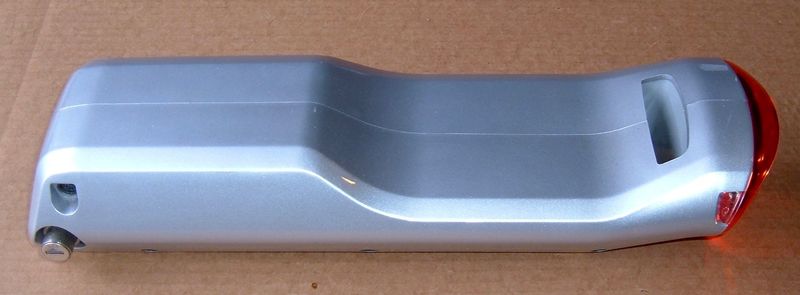It’s 2016. We’ve all messed around with lithium battery powered devices. Cell phones, laptops, tablets, GPS units, smart watches, hoverboards… whatever. After a few years worth of use, they all have absolutely terrible battery life, and you need to either replace the battery (if that’s even possible) or buy a new one (with the manufacturers, obviously, preferring you to buy a new one).
Why should electric cars be any different? Won’t they just need their battery replaced in a few years, for some absurdly large sum of money?
Probably not - at least if the auto maker is doing things properly. There’s quite a few reasons involved, and I’m about to dive into most of them.
The biggest factors in determining battery longevity are battery chemistry and additives, temperature of the cells when charging and discharging, state of charge when stored, cycle life, and pack capacity.
Keep reading for a dive into all of these!
Battery Chemistry
One of the biggest factors in battery longevity is the battery chemistry. Everyone hears about “lithium ion” or “lithium polymer” batteries, but those terms are incredible generic - they’re about as precise as “internal combustion engine.” Do you mean gasoline, diesel, or natural gas? Otto cycle? Atkinson Cycle? Diesel cycle? Gas turbine? Piston? Rotary? Wankel?
“Lithium ion” refers to a battery that uses lithium ions (surprise!) to transport charge around. This includes an incredibly broad selection of actual battery chemistries.
“Lithium polymer” or “LiPo,” at this point, just refers to a lithium ion chemistry in a semi-flexible pouch cell. Nothing more.
What really matters is the actual chemistry involved in the battery reactions. This will be something like lithium cobalt oxide (LiCoO2, ICR), lithium manganese (LiMn2O4, IMR), nickel cobalt aluminum (LiNiCoAlO2, NCA), nickel manganese cobalt (LiNiMnCoO2, NMC), lithium iron phosphate (LiFePO4, LFP), lithium titanate (LTO), or one of a variety of other chemistries suited to doing specific things.
Then, within a given battery chemistry, there are other things that can have a huge impact on power, energy, and longevity. The details of anode and cathode construction/structure, the specific blends of materials involved, and the additives (small trace chemicals that affect battery performance and longevity in significant ways) will all vary between manufacturers, and even between different battery product lines for a given manufacturer. Sadly, most of these details aren’t available to random people on the internet.
Ideally, we’d just use batteries that had incredibly high energy density (how much energy they store per unit weight or volume), incredibly high power density (how much power they can provide at any individual moment), and infinite cycle life (you can keep using them until the end of the universe without any capacity loss). Of course, in that universe, we’d also have unicorns that poop rainbow colored ice cream.
Sadly, we don’t live in Physics Utopia Universe. We’re bound by the laws of physics, chemistry, and our universe, which all generally say, “You can have more of some, but you get less of others. And if you want more of all of them, you’re not going to be happy with the cost.” So, we pick and choose - and for electric vehicles, cost is a huge factor. Nobody would buy a Leaf-like vehicle for a million dollars, even if the battery chemistry was pure unicornium. So, we remain bound to realistic, affordable chemistries.
Different automakers have chosen different chemistries. Tesla uses NCA in the Model S (and presumably the Model X). BMW is using NMC in their i3. Chevy and Nissan are both using some variety of lithium manganese (LiMn) chemistry, perhaps a pure LiMn, perhaps not (this information is actually quite hard to find without paying hundreds of thousands of dollars for teardown reports). Mitsubishi is of off in the weeds, using lithium titanate in their i-MiEV series.
And, of course, each manufacturer will have their own specific variants within that chemistry.
So far, Tesla’s gamble with NCA seems to be paying off. Nissan has been having pack degradation issues on their early cars in hot areas, the i3 is too new to really tell, and I don’t have enough data on other EVs to have a great feel for how they’re aging (though evidence seems to indicate Chevy is doing the right things).
There’s an awful lot of highly technical and incredibly detailed information in Jeff Dahn’s talk, Why do Lithium Ion Batteries Die? - if this stuff is interesting to you, the talk is absolutely worth watching. Even if you don’t understand all of it, there’s a lot of great data in there.
What about your experience with laptops and cell phones?
Your laptop and cell phone are most likely using an aggressive lithium cobalt oxide chemistry that’s being run to its limits. Why? It has the highest energy density. And “new out of box runtime” is very important - that’s what all the review sites will report. As most OEMs view cell phones and laptops as having a short life span (2 year or so seems to be considered the useful life of a cell phone), battery longevity just doesn’t seem to matter much to them. Besides, if a cell phone lasts forever, why would anyone buy a new one?
Temperature and Thermal Management
Lithium ion batteries are very picky about temperature. They don’t like being too cold, they really don’t like being too hot, and they tend to lose capacity quickly if you mistreat them thermally (or they’ll enter thermal runaway and get insanely hot).
Laptops and cell phones suffer from horrible temperature extremes. They have no thermal management (beyond stopping charging or shutting down if too hot), so just suffer through whatever environment they’re in. If a laptop is charged after sitting in a frozen car all night, it charges while cold. If the battery sits, fully charged, in a hot laptop that’s used for gaming, it roasts. And they simply don’t last very long in these conditions.
If lithium batteries are cold when you discharge them, nothing particularly bad happens, but capacity and power are way down. If you try to charge them when they’re too cold, many chemistries are prone to lithium plating (lithium metal depositing on the anode). This is really bad for longevity and capacity.
If the batteries are too hot for too long, their capacity suffers a loss because the various side reactions in the cell speed up.
Tesla has gone all out on battery pack thermal management. The 18650 cells have coolant running through a channel that presses against each cell. The coolant also runs through the vehicle’s thermal management system that can heat or cool it as needed to reach the desired battery temperature.
Reports from Tesla owners I know indicate that the car actually charges slower in cooler (40-50F) ambient temperatures, because the pack heater is using power keeping the pack warmed while charging. While supercharging, the cooling system is audibly running wide open, keeping the batteries cool. And even in very cold temperatures, the Model S will heat the pack before charging it (from what I understand).
Tesla takes battery thermal management incredibly seriously, has designed a very robust system to do it, does it very well, and is willing to divert power from charging to keep the pack temperature as desired.
BMW also has active thermal management of their i3 pack. They use AC refrigerant to cool the pack, and they can heat it as well (though convincing the car to warm the pack before departure seems to be unusually complex). The BMW system is simple, and seems quite capable of doing whatever the control electronics want for pack temperature. How well this works in the field is yet to be seen.
Chevy has a full battery heating/cooling system in the Volt. This is a rather complex system with quite a few coolant loops (having a gas engine adds to the cooling complexity), but some analysis from Arizona demonstrates that Chevy is taking battery thermal management very seriously as well.
Nissan seems to take the extreme opposite approach, and just lets the pack hang out under the car. On the newer models, Nissan has added a low power pack heater, but only for extreme cold situations, the heater doesn’t appear to be used during charging, and the Leaf still has no pack cooling capability. This has led to capacity loss in extremely hot conditions, which Nissan claims has been resolved by a pack chemistry change - but they still have no active cooling. Nissan is obviously constrained by cost for the Leaf, but zero pack thermal management is a risky gamble for battery longevity.
In general, better thermal management is going to lead to a longer lived pack than poor or missing thermal management. If you live in a very mild climate, it’s probably fine, but if you live somewhere that gets properly hot or properly cold, a car that can heat or cool its battery pack, and does so regularly, will keep its battery useful for a longer time.
It’s worth noting that, at least for some cars, they will continue to draw power from the charger to maintain the battery pack temperature - so keeping the car plugged in while sitting in extreme temperatures won’t hurt anything, and it may help a good bit.
State of Charge & Charge Control
Lithium batteries are most stressed (physically) when fully charged and fully empty - as defined by the cell chemistry, not the car’s dashboard.
This means that, all other things being equal, a battery that is only charged to 90% and drained to 10% (instead of 100% to 0%) will last longer. Often, very significantly longer, both in cycle count and calendar life.
There are two ways of doing this. The first approach is to always “short stroke” the battery - declare that, for example, 90% is fully charged, and 10% is empty. The downside of this method is that you always only have 80% of the pack capacity available - and this means less rated range.
Chevy is taking this approach with the Volt. They’re using the middle 10.4kWh (65%) of a 16kWh pack, running it from 22% to 87%. This is a very conservative way to run a pack, but the Volt doesn’t need the maximum range possible - it has a gas engine for that.
Tesla and Nissan both do this to some extent as well, but not nearly as significantly as Chevy is.
The second approach is to leave the option up to the drivers, and rely somewhat on normal driving behavior.
Drivers of an electric car will rarely run the battery totally flat. It tends to involve calling for a tow or charge, pushing, walking, and other things that simply aren’t as much fun as driving. So, it’s probably just fine to let the battery drain nearly to 0%, because it won’t happen very often, and will almost always be followed by charging. The damage comes from long term sitting at or near 0%, not just occasionally brushing against it.
The fully charged end is much more interesting. Many drivers don’t need the full range of their car on a daily basis - and this is significantly more likely to be true with long range electric cars. So, instead of fully charging for a 30 mile daily round trip, you allow the driver to only charge part way - perhaps to 85% or so.
There’s nothing wrong with charging to 100% and then using the range, but keeping the battery at 100% state of charge for long periods (as would happen if you charged to 100% every night) is harmful to batteries over the long term.
Tesla includes a charge limit setting that allows the driver to request significantly lower than 100% charging, and if I’m not mistaken, will actually prompt the user to set this if they’re regularly charging to 100% and not using the range.
Nissan apparently removed this feature from the Leaf in 2014.
I can’t find any mention of this option for the BMW i3, so either it doesn’t exist, or is not commonly used.
Cycle Life
Quick quiz: You have an electric car with a 100 mile range. You drive 20 miles and fully charge. How many cycles have you put on the battery?
Many people would consider this one cycle. It’s not - it’s only 1/5th of a cycle, as far as a lithium battery is concerned! A full cycle is draining the rated capacity out and recharging it. This can be done at once, or over the course of several uses. If you drove 20 miles a day for 5 days, that would be considered “one cycle” on the battery.
Cycle count is the most important way of specifying battery life - battery lifespan is often stated in “cycles to 80% capacity.” However, this rating is usually significantly affected by battery temperature and state of charge - a hot battery held at 100% for long periods may not reach anywhere close to rated cycle life, while a well thermally managed battery that normally charges to 85% may exceed rated cycle life by a factor of two or four.
What this means is that for a given driving distance, a larger battery pack will last longer, simply because it’s undergoing fewer cycles. Given three otherwise identical battery packs (let’s use 24kWh, 60kWh, and 90kWh) all driven identically, after some number of miles, it’s very likely that the 90kWh pack will retain the highest percentage of initial capacity, followed by the 60kWh pack, then the 24kWh pack. The shortest range pack will suffer the most degradation, as it undergoes more cycles to accomplish the same number of miles.
To give a concrete example: Assume 300Wh/mi, and 150,000 miles. How many cycles will each pack undergo for this range?
150k miles at 300Wh/mi is 45 MWh worth of energy that has to flow through the battery.
- 24kWh pack: 1875 cycles
- 60kWh pack: 750 cycles
- 90kWh pack: 500 cycles
When you consider that many lithium cells have a rated cycle life to 80% of around 1000 cycles, this shows just how important a large pack is for longevity.
Degraded Pack Remaining Range
Finally, it’s worth considering how much range a car can lose before it becomes useless for its desired purposes. Capacity loss vs cycle count is usually fairly close to a linear curve - so if it takes 10 years of driving to drop to 80% pack capacity, another 10 years is likely to get the car to around 60% capacity (realistically, a bit lower, because it’s undergoing more cycles in that time due to the reduced capacity). There’s usually no cliff where the pack becomes worthless, just an ongoing loss of capacity over time. This is why people often refer to packs being “recycled” into stationary storage - as long as the cost per kWh is low, it doesn’t really matter what the percent of original capacity is.
But, for driving, there’s some minimum range below which the car becomes useless as a car, and will either need a new battery pack or will take a trip to the scrap hard.
A car with a 280 mile initial range, with a pack degraded to 60%, still has a useful range of 168 miles - which is plenty for most people’s daily commuting, even factoring in heating/cooling loads, rain, wind, etc.
On the other hand, a car originally rated at 84 miles, at 60% pack capacity, only has 50 miles of range. That’s starting to cut it really close if you use your heater or have to deal with crosswinds.
Combining this effect with the reduced degradation from the lower cycle count on larger packs, and it becomes evident that a large pack will last significantly longer than a small pack before needing replacement.
Cell Phones & Laptops
I started by talking about cell phones and laptops, so I should at least provide a bit of useful advice for them.
If you’re using your phone regularly, just use it. However, it’s not great to leave it fully charged - so consider charging in the evening or morning instead of plugging it in all night. I’ve yet to meet a phone that lets you turn down the “fully charged” percent, and some of the newer devices are pushing their batteries really hard.
If you are in extreme hot or cold conditions, let your phone come back to room temperature before charging if at all possible. Plugging your phone in to charge after a day on the ski slopes is really, really hard on the battery.
For storing a phone when it’s not being used, aim for around 50% battery - it doesn’t have to be perfect, just close. 60% or 70% is fine as well - but don’t store it fully charged.
Laptops should be kept cool. A blazing hot laptop with a fully charged battery will cook the battery in a hurry. Clean your fans! And, again, don’t store it with a full battery if you can avoid it.
Conclusions
Based on everything I know about batteries, Tesla has done an amazing job of designing their pack for longevity in the Model S, X, and hopefully subsequent models. They’ve got a good chemistry, great additives, amazing thermal management, a very large pack, and user controls on charge percentage. There’s just no reason to worry about their battery pack. Set the charge limit to 85% whenever you don’t need the maximum range, don’t let the car sit for weeks with a stone dead battery, and just drive it. They’ve done a great job.
BMW has a robust battery system the i3, though I’m a bit confused as to why they don’t preheat the batteries when preheating the cabin by default. I also don’t know how aggressively their system cools the battery in hot climates, or what temperature range it prefers for charging. But, their pack has the capability to thermally manage the battery, and assuming they’ve done their homework, the battery should age just fine. With the range extender option, it doesn’t even matter as much, since you’ll still be able to get where you want to go.
Chevy has taken an incredibly conservative approach with the Volt battery pack. They only use the middle 65% of its capacity, they have very capable pack thermal management, and they use it. I don’t see any reason to expect issues with their electric only range for a very long time, and people driving them aren’t reporting issues either.
As for Nissan? Well, there’s a good reason a lot of people lease a Leaf. Once you give it back, the capacity loss is someone else’s problem. Their approach to battery longevity seems to consist of “hope” and “well, we’ve got an improved battery chemistry…” - the small pack and lack of thermal management mean they’d better have an amazing battery chemistry if they want their packs to last a long time. On the flip side, their pack is small, and should be cheaper to replace in the future if needed.
Hopefully I’ve provided you with a useful overview of some of the factors involved with the aging and capacity loss of electric vehicle battery packs.
If there’s anything I’ve missed, please, let me know in the comments!
Comments
Comments are handled on my Discourse forum - you'll need to create an account there to post comments.If you've found this post useful, insightful, or informative, why not support me on Ko-fi? And if you'd like to be notified of new posts (I post every two weeks), you can follow my blog via email! Of course, if you like RSS, I support that too.








